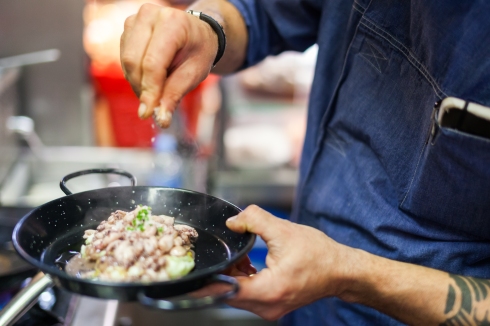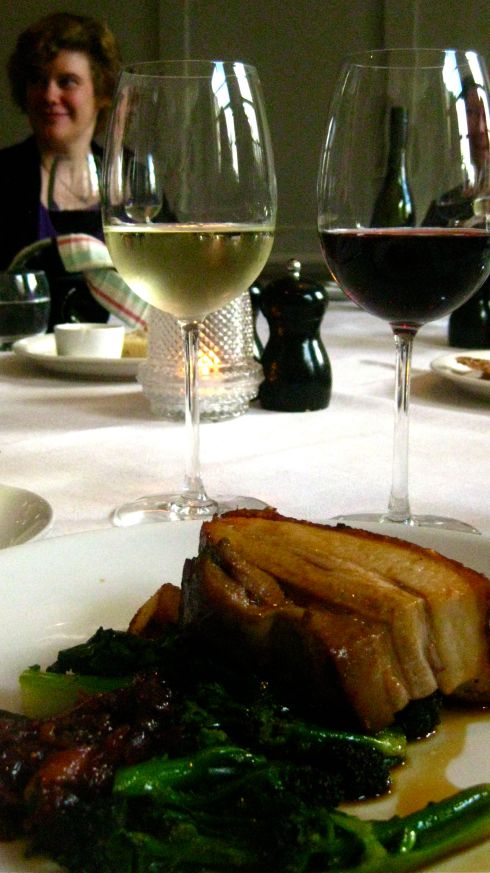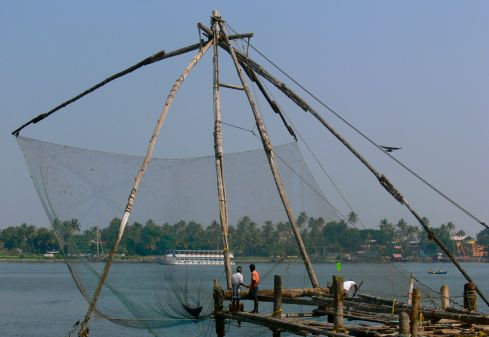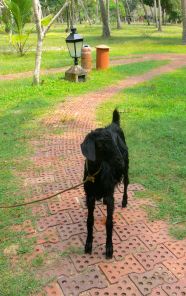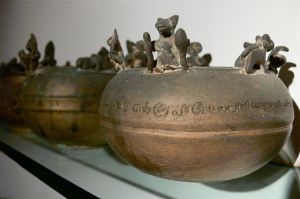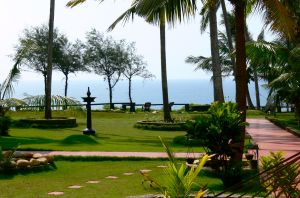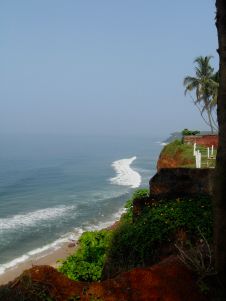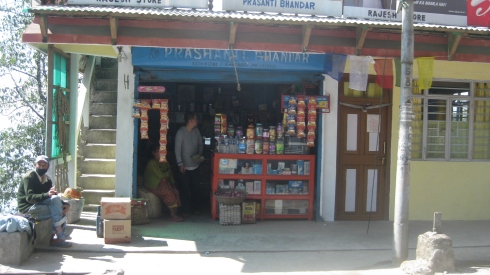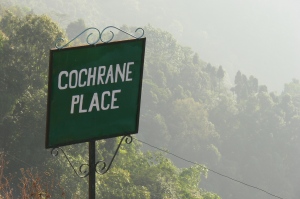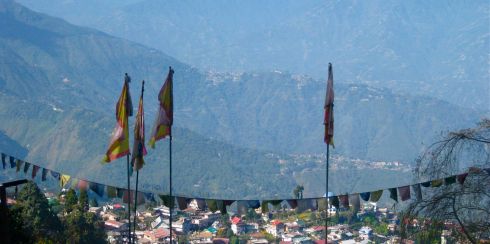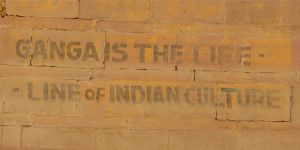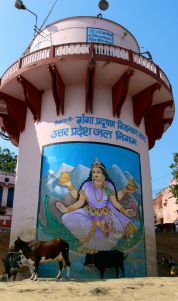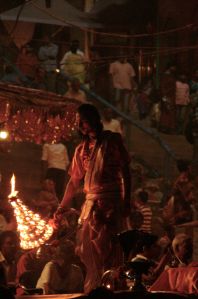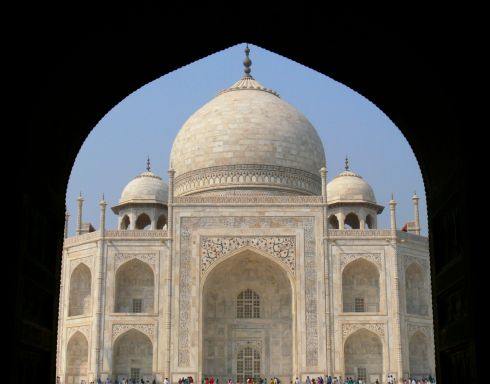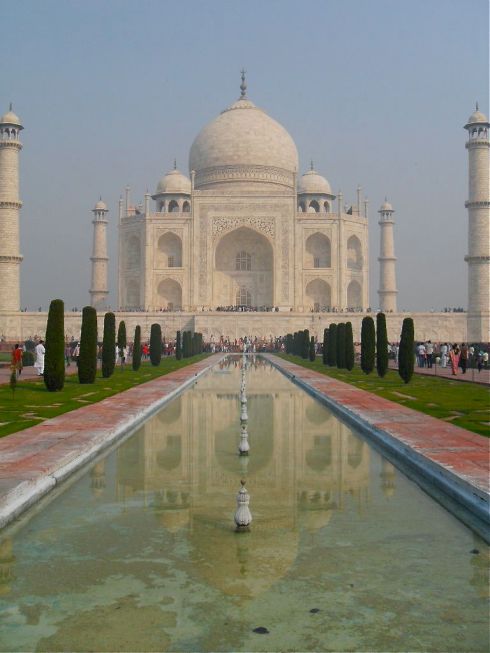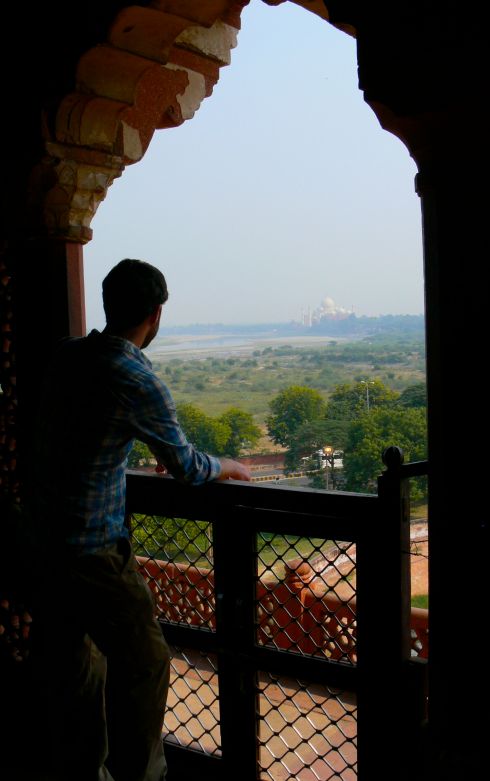
A kettavullum – what I wanted to take on the backwaters.
“You’ll be so relaxed in Kerala!” said friends. “You’ll love it, it’s the most relaxing place ever!” said others.
That was just what the boy and I were hoping to hear as we’d booked Kerala to be the last port of call during out travels around India. We couldn’t wait to let the chilled out times take over. And that, luckily, was what we experienced during our first four days in Varkala – beauty, sunshine, heat, friendliness and just pure paradise.
But our relaxing times were not, as we learned, to continue. Instead, I found myself crying into a plate of soggy pasta, ruing our decision to leave Varkala’s shining shores. But more on that later.
You see, I’d had it in my head for months when planning the trip that we would take a Kettuvallam around the backwaters of Kerala. It was the one thing I’d been looking forward to most for the final part of our trip.
You see, a Kettuvallam is a traditional, large Keralan style houseboat with thatched roof and large deck for watching the day go by as you drift up the backwaters, which make up a huge area of the central part of this south western state. It sounded like just the thing to enjoy a day on and I’d built it up so much in my head that I couldn’t wait to leave Varkala (as much as we were in love with it) so that we could go and find one to rent.
I’d done a lot of research ahead of time and found that most guidebooks recommend showing up the day before you want to take a boat and negotiating with the agencies directly. So, we packed our bags, treated ourselves to a taxi journey from Varkala to Kollam and got ourselves dropped directly at the front door of the “highly recommended” District Tourism Promotion Council office, which was supposedly the best place to get a good deal.Lon
Unfortunately, our conversation with the tourism office did not go so well. It went more like this:
“Yes, we have a boat that you can take to Alleppey. It will include your captain, food, water and overnight stay.”
“Perfect – and how much would that be?”
“16,000 rupees.”
“How much?”
“16,000 rupees.”
“You mean, £200? Seriously? No, we’ve done our research and it’s definitely supposed to be around 8,000 rupees.”
This exchange continued for a while until I called them thieves and stormed out. The boy was not, I might add, impressed with my negotiating skills.
The next two hours proceeded to be similar in their frustrations, only we were carrying our heavy backpacks with us too to make things even more awkward. After trying our best, what cropped up was one of those spaces of time that, when you travel, almost inevitably crop up, the “I just want to be in my house where it’s clean and in my city where people are nice” kind of breakdowns. This led to the aforementioned crying into my noodles.

A Keralan bus (photo care of: learn-malayalam.com)
So, we decided we’d cut our losses in Kollam and find a way out of the town sharpish. Our only option was a bus. Which, by the way, turned out to be the best part of our transport travels in India.
You see, buses are large – very large. And ramshackle. And the drivers of these buses seem to have no care for the other vehicles on the road – being the largest things, they can zoom straight up the middle of the highway with no fear of anyone getting in their way. Which is exactly how our driver acted for the two hours we were in his company.
As we plowed our way up the highway, watching smaller trucks and cars swish past the holes in the bus where windows normally would be the boy and I couldn’t help but laugh, especially as everyone looked at us in puzzled form since we were the only foreigners in their midst. It was well worth the £1.50 we paid.
And so after two hours of chaotic driving we arrived into Alleppey. There we headed for what our guidebook suggested was a great little cheap hotel (the Palmy Residency, which people on TripAdvisor also seem to love) to bed down in. Cheap it was. Great it wasn’t. When I tried to explain that for our £5 we were going to need sheets that didn’t have blood on them and the man looked at us like we were demanding, I knew we weren’t going to be in for a good stay. But, we’d already lugged our backpacks down many a dirt road to get there and we couldn’t be bothered with looking elsewhere – so long as he changed the sheets (which he did).
We headed out pronto to try and find another houseboat carrier that would take us the next day. You see, there are dozens of Kettuvallam companies in Alleppey – far more than in Kollam – so we thought we had a good chance of negotiating.
Unfortunately, it was not to be our day. After speaking to a dozen agencies up and down the main drag, they all wanted to do their best to rip us off. We eventually settled on doing a backwater canal day trip on a smaller, hand rowed boat with Antony’s Tours and Travels and I let go of my dream of taking a Kettuvallam for good.
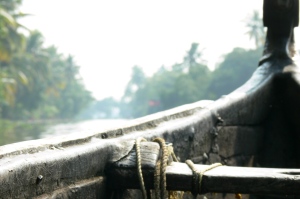
By the time we’d worked our way through all the agencies, almost all the restaurants were closed. I’d only eaten a few bites of soggy noodles so was starving but despite the boy’s and my best efforts, a restaurant was not to be found. So, we settled on bags of crisps. Yep, that’s how desperate things got. And what’s worse? The fan in our musty room was barely working when we got back.
As we sat down on the bed in our pants, sweating and exhausted, eating crisps and drinking lukewarm beer, I luckily still managed to chuckle. As the boy put it: “At least you always tend to remember these types of moments and we can laugh about it later.”

The next morning, things seemed to be looking up. The sun was bright and we arrived at Antony’s Tours and Travels with fresh hopes for the new day. But, once more, Alleppey disappointed.

We’d been promised a great backwater tour with loads of journeys down little canals that the massive Kettuvallams couldn’t get to. What we actually got was one trip down one little canal to get dropped off on the bank where we were presented with coconuts and then (after consuming them) told we had to pay for them, before being badgered by the young tour guide constantly to buy him sweets and water (because he was sooooo hungry and soooo thirsty) and for me to please give him my backpack because he loved it. The young guide kept trying to give the boy and I (and the other guests: two Colombian girls and one French guy) alcohol before graphically flirting with the French guest and telling him some very rude things about what he wanted to do with him.

The boy being put to work.
We then had lunch in a village house that was meant to be followed by a village tour but, instead, found ourselves stuck for two hours in the host’s house constantly being told we’d “move along in a little while” but never actually leaving. And the other guide kept getting the boy to row the boat because he was too tired!
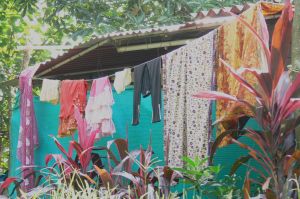
Okay – there were some good points: the backwaters (as you can see from the pictures) are beautiful and teeming with life.
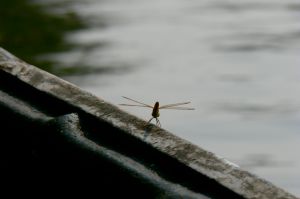
But, I can, most certainly, never, ever recommend Antony’s Tours and Travels – all we’d been promised was reneged on and I can’t imagine how that company’s managed to get so many good reviews on TripAdvisor!
And so, our time in Alleppey could not come to a close quick enough for me. We ended up staying at the Palm Grove Lake Resort (after a nightmare of a time trying to find a hotel as every one seemed to only have the most expensive rooms available) and that, at least, was serviceable (except for the army of ants that invaded our room).
All in all, Alleppey and the backwaters stand out for how awful they were. But, that, is sometimes what you get when you travel. Those promises of relaxation were not to be for all of Kerala. I can only hope that others among you have better experiences if you manage to get there!
In Part 8, the boy and I take in some luxury hotels and finally see how relaxing Kerala can be – if money were no option.
Tags: Alleppey, backwaters, bus, District Tourism Promotion Council, India, Kerala, Kollam, Lonely Planet, paradise, the boy, travel, Varkala
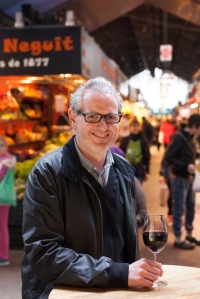 Why have you decided now is the right time to bring the Spanish spirit to London by partnering with Streets of Spain?
Why have you decided now is the right time to bring the Spanish spirit to London by partnering with Streets of Spain?
